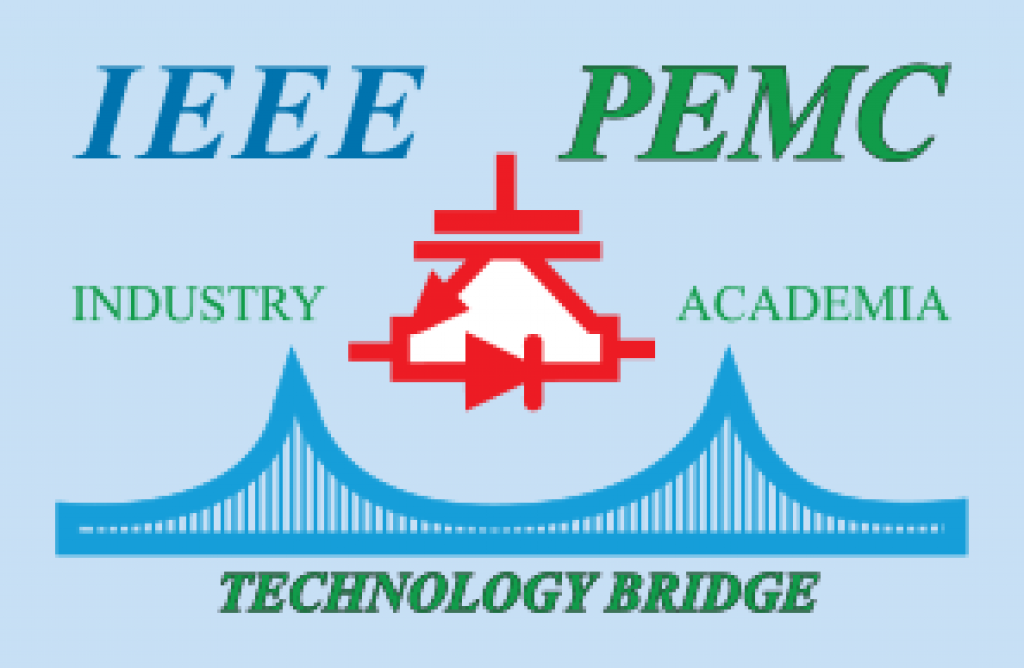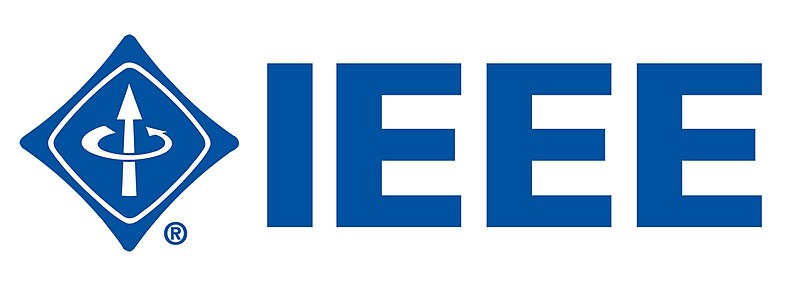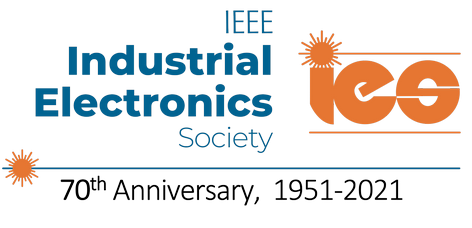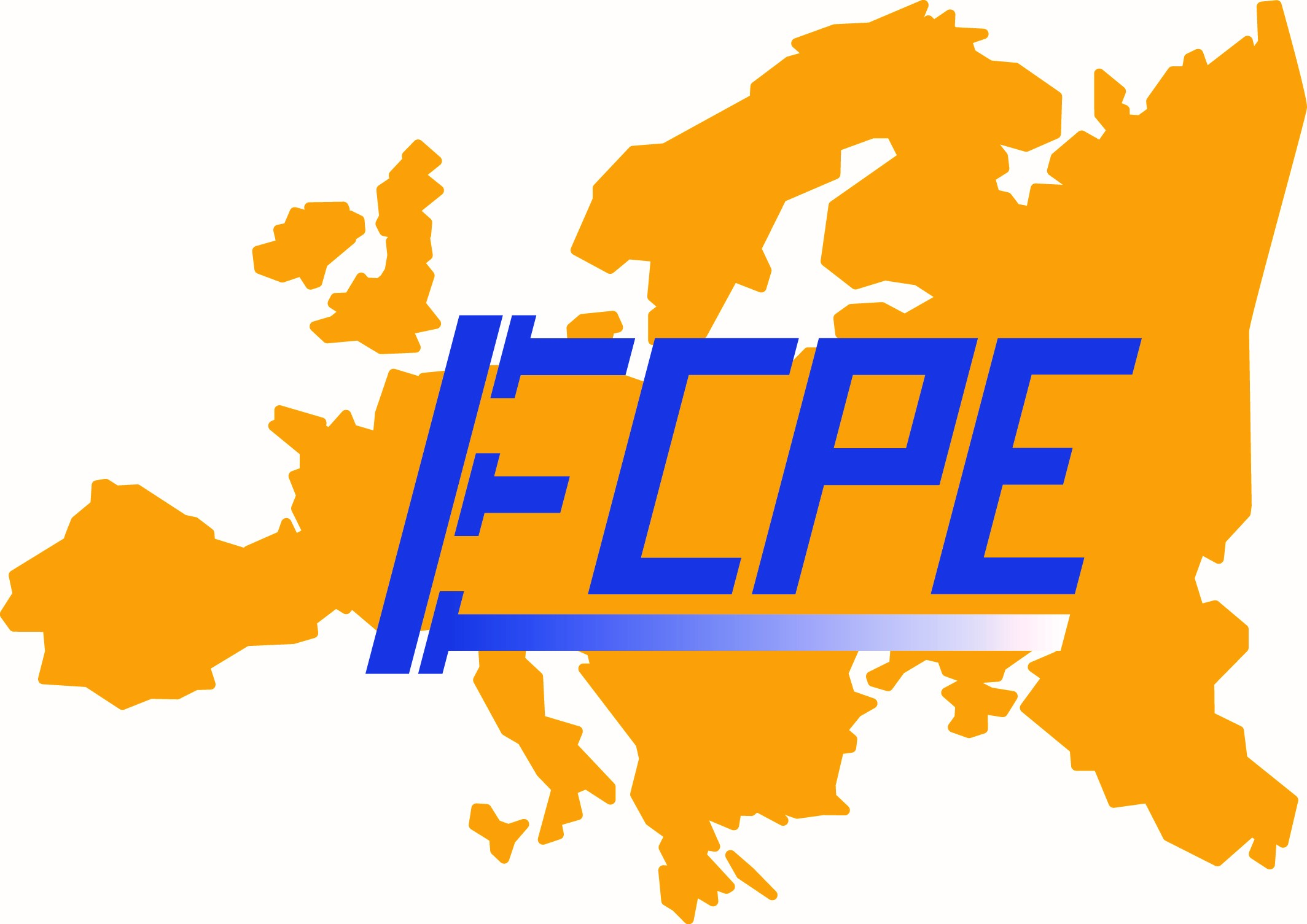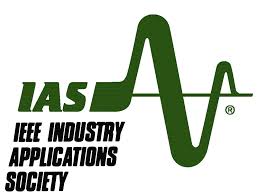Keynote Speakers
Following distinguished researchers confirmed keynote speeches during IEEE-PEMC2020:
Johann W. Kolar (ETH Zurich, Switzerland)
Title: X-Technologies Driving Power Electronics 4.0
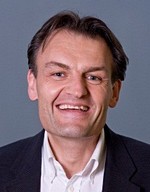 Bio: Johann W. Kolar is a Full Professor and the Head of the Power Electronic Systems Laboratory at ETH Zurich. He has proposed numerous novel converter concepts, has spearheaded the development of x-million rpm motors, and has pioneered fully automated multi-objective power electronics design procedures. He has graduated 75+ Ph.D. students, has published 900+ journal and conference papers and 4 book chapters, and has filed 200+ patents. He has received 35+ IEEE Transactions and Conference Prize Paper Awards, the IEEE William E. Newell Power Electronics Award, and two ETH Zurich Golden Owl Awards for excellence in teaching. He is a Fellow of the IEEE and was elected to the U.S. National Academy of Engineering as an international member in 2021. The focus of his current research is on ultra-compact/efficient WBG converter systems, ANN-based design procedures, Solid-State Transformers, ultra-high speed drives, and bearingless motors.
Bio: Johann W. Kolar is a Full Professor and the Head of the Power Electronic Systems Laboratory at ETH Zurich. He has proposed numerous novel converter concepts, has spearheaded the development of x-million rpm motors, and has pioneered fully automated multi-objective power electronics design procedures. He has graduated 75+ Ph.D. students, has published 900+ journal and conference papers and 4 book chapters, and has filed 200+ patents. He has received 35+ IEEE Transactions and Conference Prize Paper Awards, the IEEE William E. Newell Power Electronics Award, and two ETH Zurich Golden Owl Awards for excellence in teaching. He is a Fellow of the IEEE and was elected to the U.S. National Academy of Engineering as an international member in 2021. The focus of his current research is on ultra-compact/efficient WBG converter systems, ANN-based design procedures, Solid-State Transformers, ultra-high speed drives, and bearingless motors.
Abstract: Power Electronics is a key technology for all forms of generation and utilization of electric power in modern societies, ranging from renewable energy generation and all types of power supply applications including fast-charging of EVs and hyperscale datacenters to actuator systems like variable speed drives that consume 60% of all electric energy used in industry.
The progress in the area has been driven over the past 40 years by new power semiconductor concepts and corresponding circuit topologies and modulation/control concepts. After a 1st main step initiated by the introduction of the thyristor in 1958 and a 2nd step around 1985 triggered by the availability of Si bipolar and unipolar turn-off devices finally built as IGBTs and superjunction MOSFETs, lately a 3rd disruptive development step introduced wide bandgap devices, e.g. GaN power semiconductors dominating the low voltage arena and zero-recovery SiC diodes and power MOSFETs, which are offering exceptionally low on-resistance and high switching speeds up to unprecedented high voltages. Moreover, power electronics has massively benefitted from the parallel breathtaking development of digital signal processing which was adopted early for variable speed drive systems and since around 2005 is also regularly used in switch-mode power supplies.
Now we are at the beginning of a fascinating and even more dynamic 4th step of power electronics development and it is interesting to contemplate on the driving forces, in other words to identify the “X-technologies” and/or “moonshot technologies” of power electronics over the next decade. Starting from basic scaling laws, the talk identifies 4 core technologies potentially driving the disruption towards Power Electronics 4.0, namely wide-bandgap power semiconductors, multi-cell/level converter concepts, functional association and synergetic multi-stage converter control and finally advanced modelling and simulation and/or multi-objective design automation including digital twins, which are a key prerequisite for the introduction of Industry 4.0 concepts in Power Electronics.
Future power electronics converters have to be seen as intelligent systems, which are actively monitoring and diagnosing their source and load environment based on different types of models and actuations, aggregating data and distilling information, receiving data/updates from and reporting status information to the cloud, a type of system best denominated as Cognitive Power Electronics 4.0. Accordingly, we are at the advent of a fascinating next phase of highly dynamic development in power electronics, which will also fully conquer the very low voltage/power and the medium/high voltage domains. Mariusz Malinowski (Warsaw University of Technology, Poland)
Title: Fault tolerant smart transformer in distributed energy systems - opportunities and challenges
 Bio: Mariusz Malinowski (Fellow, IEEE) received the Ph.D. and D.Sc. degrees in electrical engineering from the Institute of Control and Industrial Electronics, Warsaw University of Technology (WUT), Warsaw, Poland, in 2001 and 2012, respectively. He was a Visiting Scholar at Aalborg University, Aalborg, Denmark; the University of Nevada, Reno, NV, USA; the Technical University of Berlin, Berlin, Germany; and ETH Zurich, Zurich, Switzerland. He is currently with the Institute of Control and Industrial Electronics, WUT. His current research interests include control and modulation of grid-side converters, multilevel converters, smart grids, and power generation systems based on renewable energies. He has co-authored over 130 technical papers and six books. He holds two implemented patents. Prof. Malinowski was the recipient of the Siemens Prize in 2002 and 2007; the WUT President Scientific Prize in 2015; the Polish Minister of Science and the Higher Education Awards in 2003 and 2008; the Prime Minister of Poland Award for Habilitation in 2013; and the IEEE Industrial Electronics Society (IES) David Irwin Early Career Award in 2011 and Bimal Bose Energy Systems Award in 2015. His industry application received several awards and medals, the Innovation Exhibition in Geneva in 2006 and the Exhibition in Brussels "Eureco" in 2006.
Bio: Mariusz Malinowski (Fellow, IEEE) received the Ph.D. and D.Sc. degrees in electrical engineering from the Institute of Control and Industrial Electronics, Warsaw University of Technology (WUT), Warsaw, Poland, in 2001 and 2012, respectively. He was a Visiting Scholar at Aalborg University, Aalborg, Denmark; the University of Nevada, Reno, NV, USA; the Technical University of Berlin, Berlin, Germany; and ETH Zurich, Zurich, Switzerland. He is currently with the Institute of Control and Industrial Electronics, WUT. His current research interests include control and modulation of grid-side converters, multilevel converters, smart grids, and power generation systems based on renewable energies. He has co-authored over 130 technical papers and six books. He holds two implemented patents. Prof. Malinowski was the recipient of the Siemens Prize in 2002 and 2007; the WUT President Scientific Prize in 2015; the Polish Minister of Science and the Higher Education Awards in 2003 and 2008; the Prime Minister of Poland Award for Habilitation in 2013; and the IEEE Industrial Electronics Society (IES) David Irwin Early Career Award in 2011 and Bimal Bose Energy Systems Award in 2015. His industry application received several awards and medals, the Innovation Exhibition in Geneva in 2006 and the Exhibition in Brussels "Eureco" in 2006.
Abstract: The fast development of distributed generation systems (DGS), including increasing number of the renewable energy sources (RES) demand the change of classical grid into smart grids (SG) integrating all new distributed elements e.g. active loads/sources/energy storages. Currently used conventional transformer cannot fulfil all requirements of SG and therefore new solution is demanded due to the nature of extremely different types of energy sources, loads and frequent voltage disturbances occurring in DGS. The proposed modern solution is the application of multifunctional power electronics fault tolerant Smart Transformer (ST) that is able to not only meet main requirements of SG, but also respond to the future challenges, defined by the constant progress of technology in all new fields (e.g. electromobility, energy store systems etc.).Zdenek Peroutka (University of West Bohemia, Czech Republic)
Title: Power Electronics Technology for Distribution Grids: New Earth Faults Solutions
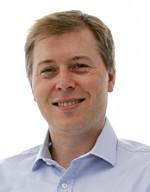 Bio: Zdeněk Peroutka received the Master's and Ph.D. degrees in electrical engineering from the University of West Bohemia (UWB), Pilsen, Czech Republic, in 2000 and 2004, respectively. He is a Full Professor of power electronics and drives and the Dean of the Faculty of Electrical Engineering, UWB. From October 2010 to June 2016, he was a Scientific Director and Principal Investigator of the R&D center RICE at UWB. Since July 2016, he has been a CEO and Principal Investigator of the R&D center RICE. He has published more than 200 papers in international journals and conference proceedings. He is the inventor of three international patents and three utility models. His main research topic is power electronics and drives for modern transport systems and power engineering.
Bio: Zdeněk Peroutka received the Master's and Ph.D. degrees in electrical engineering from the University of West Bohemia (UWB), Pilsen, Czech Republic, in 2000 and 2004, respectively. He is a Full Professor of power electronics and drives and the Dean of the Faculty of Electrical Engineering, UWB. From October 2010 to June 2016, he was a Scientific Director and Principal Investigator of the R&D center RICE at UWB. Since July 2016, he has been a CEO and Principal Investigator of the R&D center RICE. He has published more than 200 papers in international journals and conference proceedings. He is the inventor of three international patents and three utility models. His main research topic is power electronics and drives for modern transport systems and power engineering.
Abstract: Power electronics technology is one of the major innovation players in modern power distribution grids. Power electronics systems are at present deeply penetrated in low-voltage grids. Recently, their importance is significantly growing also in medium-voltage and high-voltage power grids. The power electronics technology brings new solutions and features for power routing (including interfaces to renewable and distributed power sources and energy storage systems), power quality (reactive power compensation, voltage conditioners, active power filters), safety and protection systems as well as grid diagnostics. This keynote will pay the main attention to a new power electronics technology for earth fault solution in high-impedance grounded or insulated medium-voltage power distribution grids. The invented technology behaves like a controlled current source which can be connected either between the distribution transformer neutral point and ground (where it can replace the conventional arc suppression coil used in the grids for more than 100 years) or between the phase conductors and ground. Under the earth fault, the new device can compensate fundamental component of both reactive and active fault current. It can also compensate higher harmonics of fault current. Under fault-free grid operation, the device can compensate grid non-symmetry and the version connected to the phase conductors can compensate grid reactive power and/or grid harmonics. Moreover, the invented technology can be also used for grid impedance identification, faulty feeder detection and exact fault localization. This technology brings to the grid operators many other benefits and new features that will be presented. A prototype of 22 kV / 1.35 MVA has been developed and tested in medium-voltage power electronics labs in R&D center RICE. The prototype has been successfully tested under real distribution grid conditions at a substation 110/22 kV. The experience from one year operation of this technology in the grid and future research challenges will be presented.Jean Lévêque (Université de Lorraine, France)
Title: Superconducting machines for aircraft applications
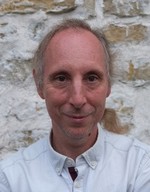 Bio: Jean Lévêque has about 30 years experiences in superconducting application covering mainly topics regarding superconducting motors or generator, fault current limiter and their impact on electrical grid and modelisation of superconducting bulk. He studied electrical engineering at the University of Nantes in France and received his doctor in physics, speciality Electrical Engineering in 1993 in university of Grenoble. From 1993 to 2019 he was with Group of Research in Electrical Engineering of Nancy in University of Lorraine, France. Since 2007 he is a full professor for Electrical Engineering at University of Lorraine. During the last years Jean Lévêque and his group were involved in a number of national and European projects concentrating on the development applied superconductivity in large scale topics. He is author/co-author of more than 200 peer reviewed papers and conferences and hold several patents.
Bio: Jean Lévêque has about 30 years experiences in superconducting application covering mainly topics regarding superconducting motors or generator, fault current limiter and their impact on electrical grid and modelisation of superconducting bulk. He studied electrical engineering at the University of Nantes in France and received his doctor in physics, speciality Electrical Engineering in 1993 in university of Grenoble. From 1993 to 2019 he was with Group of Research in Electrical Engineering of Nancy in University of Lorraine, France. Since 2007 he is a full professor for Electrical Engineering at University of Lorraine. During the last years Jean Lévêque and his group were involved in a number of national and European projects concentrating on the development applied superconductivity in large scale topics. He is author/co-author of more than 200 peer reviewed papers and conferences and hold several patents.
Abstract: Superconducting motors and generators are a particularly interesting solution for electric propulsion and electric power generation. These superconducting devices make it possible to obtain very high specific power and torques. Moreover, the high efficiency of these machines makes them interesting in terms of energy saving. Therefore, they give rise to a great deal of research. One of the goals is to find new superconducting machine structures or to optimize existing ones. One of the technical challenges is that the superconducting windings must be cooled to a few tens of Kelvin and transmit the torque at room temperature, with the minimum of thermal losses. In parallel, the MEA is developed by the aerospace industry. It consists of replacing all currently pneumatic, hydraulic and mechanical systems by electrical devices. So, the electric power need will continue to increase through the next generation of aircraft. One main observation was that this disruptive technology could reach a higher power-to-mass ratio when integrated into electrical machines.Pavol Bauer (Delft University of Technology, Netherlands)
Title: Power Flow and Protection in LVDC Systems
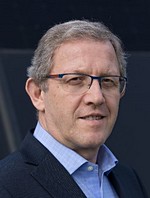 Bio: Pavol Bauer is currently a full Professor with the Department of Electrical Sustainable Energy 0f Delft University of Technology and head of DC Systems, Energy Conversion and Storage group. He was also appomitend as a professor by president of Czech Republic at the Brno University of Technology (2008) and honorary professor at Politehnica University Timisioira in Romania (2018). From 2002 to 2003 he was working partially at KEMA (DNV GL, Arnhem) on different projects related to power electronics applications in power systems. He published over 120 journal and 500 conference papers in his field (with H factor Google scholar 42, Web of Science 27), he is an author or co-author of 8 books, holds 7 international patents and organized several tutorials at the international conferences. He has worked on many projects for industry concerning wind and wave energy, power electronic applications for power systems such as Smarttrafo; HVDC systems, projects for smart cities such as PV charging of electric vehicles, PV and storage integration, contactless charging; and he participated in several Leonardo da Vinci, H2020 and Electric Mobility Europe EU projects as project partner (ELINA, INETELE, E-Pragmatic, Micact, Trolly 2.0, OSCD, Power2Power, Progressus) and coordinator (PEMCWebLab.com-Edipe, SustEner, Eranet DCMICRO). His main research interest is power electronics for charging of electric vehicles and DC grids. He is a Senior Member of the IEEE (’97), former chairman of Benelux IEEE Joint Industry Applications Society, Power Electronics and Power Engineering Society chapter, chairman of the Power Electronics and Motion Control (PEMC) council, member of the Executive Committee of European Power Electronics Association (EPE) and also member of international steering committee at numerous conferences.
Bio: Pavol Bauer is currently a full Professor with the Department of Electrical Sustainable Energy 0f Delft University of Technology and head of DC Systems, Energy Conversion and Storage group. He was also appomitend as a professor by president of Czech Republic at the Brno University of Technology (2008) and honorary professor at Politehnica University Timisioira in Romania (2018). From 2002 to 2003 he was working partially at KEMA (DNV GL, Arnhem) on different projects related to power electronics applications in power systems. He published over 120 journal and 500 conference papers in his field (with H factor Google scholar 42, Web of Science 27), he is an author or co-author of 8 books, holds 7 international patents and organized several tutorials at the international conferences. He has worked on many projects for industry concerning wind and wave energy, power electronic applications for power systems such as Smarttrafo; HVDC systems, projects for smart cities such as PV charging of electric vehicles, PV and storage integration, contactless charging; and he participated in several Leonardo da Vinci, H2020 and Electric Mobility Europe EU projects as project partner (ELINA, INETELE, E-Pragmatic, Micact, Trolly 2.0, OSCD, Power2Power, Progressus) and coordinator (PEMCWebLab.com-Edipe, SustEner, Eranet DCMICRO). His main research interest is power electronics for charging of electric vehicles and DC grids. He is a Senior Member of the IEEE (’97), former chairman of Benelux IEEE Joint Industry Applications Society, Power Electronics and Power Engineering Society chapter, chairman of the Power Electronics and Motion Control (PEMC) council, member of the Executive Committee of European Power Electronics Association (EPE) and also member of international steering committee at numerous conferences.
Abstract: DC grids are considered to be a key technology for the connection, collection and integration of renewable energy resources, for the realization of integrated power systems, for mobile applications (electric ships, aircrafts), for new types of urban and industrial distribution power networks and to bridge and support existing AC systems. Advanced power electronic components, power converters and system protection are enabling DC grids on multiple voltages levels. Especially medium voltage DC grids are expected to play a key role in managing the higher power flows in our future distribution grids. Roadmap for DC and different steps and research at the TUD is presented with focus on DC grids and DC microgrids. Problem of Power Flow control in DC grids is addressed first an Power flow controller introduced. A zonal protection framework where the low voltage dc grid is partitioned according to short-circuit potential and provided degree of protection, and several known protection schemes that ensure selectivity, sensitivity and security will be discussed.Peter Korondi (Budapest University of Technology and Economics, Hungary)
Title: Machine-learning algorithms in the field of motion control and mechatronics
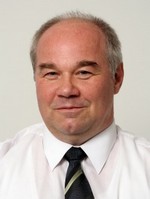 Bio: Peter Korondi is currently a full Professor with the Department of Mechatronics, Optics and Engineering Informatics of Budapest University of Technology and Economics and head of Ethorobotics group. From April 1993 to April 1995, he worked in the laboratory of Prof. Harashima and Prof. Hashimoto with the Institute of Industrial Science, The University of Tokyo, Japan, where he continues to spend a month each year, working on a joint research. As a result of this cooperation, the Intelligent Integrated System Japanese–Hungarian Joint Laboratory was founded, in 2001. His research interests include telemanipulation and motion control. Author or co-author of 15 book chapters, university notes, 121 Hungarian and foreign journal papers, 179 conference papers (including 7 Keynote lectures), 12 R&D studies; held 41 presentations at foreign universities and institutes; more than 2000 independent citations to his work. He is a Founding Member of the International PEMC Council.
Bio: Peter Korondi is currently a full Professor with the Department of Mechatronics, Optics and Engineering Informatics of Budapest University of Technology and Economics and head of Ethorobotics group. From April 1993 to April 1995, he worked in the laboratory of Prof. Harashima and Prof. Hashimoto with the Institute of Industrial Science, The University of Tokyo, Japan, where he continues to spend a month each year, working on a joint research. As a result of this cooperation, the Intelligent Integrated System Japanese–Hungarian Joint Laboratory was founded, in 2001. His research interests include telemanipulation and motion control. Author or co-author of 15 book chapters, university notes, 121 Hungarian and foreign journal papers, 179 conference papers (including 7 Keynote lectures), 12 R&D studies; held 41 presentations at foreign universities and institutes; more than 2000 independent citations to his work. He is a Founding Member of the International PEMC Council.
Abstract: Specific machine-learning algorithms and their application examples will be presented for selected motion control and robotics problems. A typical task, e.g. parameter identification of a known model of a motion control system by measurements. Setting up the right friction model is often a problem. Up to a few (up to 10) parameters can be identified manually. As we apply increasingly complex models, with hundreds of parameters, it becomes increasingly necessary to use machine-learning algorithms. The same algorithms, (which is used for parameter identification) can be used for optimal design. Then the training data is not obtained from measurement, but we adapt our model to the predetermined behaviour of the ideal system. The next level is when we do not know the structure (equations) of the model. The structure (equations) of the model is learned from the measurement data. Finally, the highest level is when we want to learn a kind of social behaviours and implement it into robots.Student & Young Proffessionals Keynotes
Grzegorz Benysek (Ekoenergetyka Polska S.A, Poland)
Title: New trends in green transport
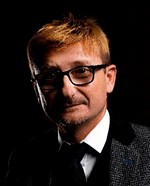 Bio: Grzegorz Benysek His scientific research focuses mainly on issues related to the use of power electronic systems in the electric power system, the elimination of the negative impact of distributed energy sources on the grids and EVs charging infrastructure. Author of over 140 scientific papers and several books published by the SPRINGER London, translated into Chinese. Author and coordinator of over 20 research, development and implementation projects. As a result of research and development, many implementations have been created. He received a number of awards and distinctions, including: Innovation Personality, awarded by the Polish Chamber of Commerce. Member of the Management Board of Grupa Ekoenergetyka and member of the Supervisory Board of Ekoenergetyka Polska S.A.
Bio: Grzegorz Benysek His scientific research focuses mainly on issues related to the use of power electronic systems in the electric power system, the elimination of the negative impact of distributed energy sources on the grids and EVs charging infrastructure. Author of over 140 scientific papers and several books published by the SPRINGER London, translated into Chinese. Author and coordinator of over 20 research, development and implementation projects. As a result of research and development, many implementations have been created. He received a number of awards and distinctions, including: Innovation Personality, awarded by the Polish Chamber of Commerce. Member of the Management Board of Grupa Ekoenergetyka and member of the Supervisory Board of Ekoenergetyka Polska S.A.
Abstract: The main purpose of the speech is to present development trends both in the field of green transport and charging infrastructure. Green transport should be understood as road (passenger cars, buses, trucks), rail, sea and air electric transport. During the speech, the parameters of energy storage systems, parameters of electric vehicles and their requirements from the point of view of the charging infrastructure will be discussed. A hybrid model of charging infrastructure will also be discussed, including both garage/parking and fast/ultra-fast, i.e. charging HUBs. The next part of the speech will focus on issues related to the impact of the charging infrastructure on the power system in terms of power and energy demand. The last part of the speech will be devoted to 3D transport.Piotr Zimoch (SMA, Poland)
Title: Renewable energy generation outlook and challenges
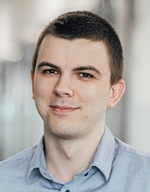 Bio: Piotr Zimoch received his M.Sc. and Ph.D. degrees in electrical engineering from the Silesian University of Technology, Gliwice, Poland, in 2016 and 2020, respectively. Since October 2020 he is working as a post-doctoral assistant at the Silesian University of Technology and as a power electronics development engineer at SMA Magnetics, part of the SMA Solar Technology AG group. His main research interests are quasi-resonant DC converters and application of wide bandgap semiconductor devices in power electronic converters.
Bio: Piotr Zimoch received his M.Sc. and Ph.D. degrees in electrical engineering from the Silesian University of Technology, Gliwice, Poland, in 2016 and 2020, respectively. Since October 2020 he is working as a post-doctoral assistant at the Silesian University of Technology and as a power electronics development engineer at SMA Magnetics, part of the SMA Solar Technology AG group. His main research interests are quasi-resonant DC converters and application of wide bandgap semiconductor devices in power electronic converters.
Abstract: The presentation outlines perspectives and technical challenges for renewable energy market development. Since decarbonization is a driver for emission free energy generation systems over the entire lifecycle, robust and dispatchable renewable energy systems are of increasing demand. Strong market increase for energy generation and storage systems is forecasted. The emerging wide bandgap semiconductor technology allows for switching frequency increase; and thus is seen as a driver for size and cost reduction. However, increased switching frequency challenges performance of passive components. The first part of the presentation introduces a general market outlook for renewable energy generation systems, while the enablers are discussed in the following part, emphasizing the benefits of wide bandgap semiconductors contrasted with the demand for high performance passive components.Anton Rassõlkin (Tallinn University of Technology, Estonia)
Title: Possibility of Digital Twins Technology for application in Propulsion Electric Drive
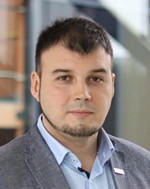 Bio: Anton Rassõlkin was born in Tallinn, Estonia, in 1985. He received the BSc, MSc, and Ph.D. degrees in electric drives and power electronics from Tallinn University of Technology (TalTech) in 2008, 2010, and 2014, respectively. In 2010 he received a Dipl.-Ing. degree in automatic from the University of Applied Science Giessen-Friedberg (Germany). He has been working in several companies as an electrical engineer and universities as a lecturer. Internationally he has been working as a visiting researcher at the Institute for Competence in Auto Mobility (IKAM, Barleben, Germany) and serves as a visiting professor at ITMO University (St. Petersburg, Russia) and Silesian University of Technology (Gliwice, Poland). Presently, he holds the professor's position in Mechatronics at the Department of Electrical Power Engineering and Mechatronics, School of Engineering, Tallinn University of Technology (Estonia). The main research interests are mechatronics and electrical drives, particularly for electric transportation, as well as autonomous vehicles.
Bio: Anton Rassõlkin was born in Tallinn, Estonia, in 1985. He received the BSc, MSc, and Ph.D. degrees in electric drives and power electronics from Tallinn University of Technology (TalTech) in 2008, 2010, and 2014, respectively. In 2010 he received a Dipl.-Ing. degree in automatic from the University of Applied Science Giessen-Friedberg (Germany). He has been working in several companies as an electrical engineer and universities as a lecturer. Internationally he has been working as a visiting researcher at the Institute for Competence in Auto Mobility (IKAM, Barleben, Germany) and serves as a visiting professor at ITMO University (St. Petersburg, Russia) and Silesian University of Technology (Gliwice, Poland). Presently, he holds the professor's position in Mechatronics at the Department of Electrical Power Engineering and Mechatronics, School of Engineering, Tallinn University of Technology (Estonia). The main research interests are mechatronics and electrical drives, particularly for electric transportation, as well as autonomous vehicles.
Abstract: A modern trend for industry digitalization brings new demands for developing and applying the modeling and simulation approach. It is already not enough to have only a virtual representation of the object and run it independently from the physical object. The Digital Twin aspect indicates a connection between the physical object and the corresponding virtual twin established by generating real-time data using physical and virtual sensors. The electric vehicle is a complex system, which requires an accurate mathematical description for monitoring and validation. Nowadays, much attention is paid to the different parts of electric vehicles. The most examined quantities are the cost of capitalization, the power density of the drive (resulting from the system size and weight), and the reliability. Most of the existing electric drive testing techniques are mainly based on physical sensors, a Digital Twin of the electric vehicle propulsion system that represents physical object operation throughout its life cycle can recommend approaches to the drive regulator tuning, control looping, sensor allocation, and feedback arrangements.
 Bio: Johann W. Kolar is a Full Professor and the Head of the Power Electronic Systems Laboratory at ETH Zurich. He has proposed numerous novel converter concepts, has spearheaded the development of x-million rpm motors, and has pioneered fully automated multi-objective power electronics design procedures. He has graduated 75+ Ph.D. students, has published 900+ journal and conference papers and 4 book chapters, and has filed 200+ patents. He has received 35+ IEEE Transactions and Conference Prize Paper Awards, the IEEE William E. Newell Power Electronics Award, and two ETH Zurich Golden Owl Awards for excellence in teaching. He is a Fellow of the IEEE and was elected to the U.S. National Academy of Engineering as an international member in 2021. The focus of his current research is on ultra-compact/efficient WBG converter systems, ANN-based design procedures, Solid-State Transformers, ultra-high speed drives, and bearingless motors.
Bio: Johann W. Kolar is a Full Professor and the Head of the Power Electronic Systems Laboratory at ETH Zurich. He has proposed numerous novel converter concepts, has spearheaded the development of x-million rpm motors, and has pioneered fully automated multi-objective power electronics design procedures. He has graduated 75+ Ph.D. students, has published 900+ journal and conference papers and 4 book chapters, and has filed 200+ patents. He has received 35+ IEEE Transactions and Conference Prize Paper Awards, the IEEE William E. Newell Power Electronics Award, and two ETH Zurich Golden Owl Awards for excellence in teaching. He is a Fellow of the IEEE and was elected to the U.S. National Academy of Engineering as an international member in 2021. The focus of his current research is on ultra-compact/efficient WBG converter systems, ANN-based design procedures, Solid-State Transformers, ultra-high speed drives, and bearingless motors.  Bio: Mariusz Malinowski (Fellow, IEEE) received the Ph.D. and D.Sc. degrees in electrical engineering from the Institute of Control and Industrial Electronics, Warsaw University of Technology (WUT), Warsaw, Poland, in 2001 and 2012, respectively. He was a Visiting Scholar at Aalborg University, Aalborg, Denmark; the University of Nevada, Reno, NV, USA; the Technical University of Berlin, Berlin, Germany; and ETH Zurich, Zurich, Switzerland. He is currently with the Institute of Control and Industrial Electronics, WUT. His current research interests include control and modulation of grid-side converters, multilevel converters, smart grids, and power generation systems based on renewable energies. He has co-authored over 130 technical papers and six books. He holds two implemented patents. Prof. Malinowski was the recipient of the Siemens Prize in 2002 and 2007; the WUT President Scientific Prize in 2015; the Polish Minister of Science and the Higher Education Awards in 2003 and 2008; the Prime Minister of Poland Award for Habilitation in 2013; and the IEEE Industrial Electronics Society (IES) David Irwin Early Career Award in 2011 and Bimal Bose Energy Systems Award in 2015. His industry application received several awards and medals, the Innovation Exhibition in Geneva in 2006 and the Exhibition in Brussels "Eureco" in 2006.
Bio: Mariusz Malinowski (Fellow, IEEE) received the Ph.D. and D.Sc. degrees in electrical engineering from the Institute of Control and Industrial Electronics, Warsaw University of Technology (WUT), Warsaw, Poland, in 2001 and 2012, respectively. He was a Visiting Scholar at Aalborg University, Aalborg, Denmark; the University of Nevada, Reno, NV, USA; the Technical University of Berlin, Berlin, Germany; and ETH Zurich, Zurich, Switzerland. He is currently with the Institute of Control and Industrial Electronics, WUT. His current research interests include control and modulation of grid-side converters, multilevel converters, smart grids, and power generation systems based on renewable energies. He has co-authored over 130 technical papers and six books. He holds two implemented patents. Prof. Malinowski was the recipient of the Siemens Prize in 2002 and 2007; the WUT President Scientific Prize in 2015; the Polish Minister of Science and the Higher Education Awards in 2003 and 2008; the Prime Minister of Poland Award for Habilitation in 2013; and the IEEE Industrial Electronics Society (IES) David Irwin Early Career Award in 2011 and Bimal Bose Energy Systems Award in 2015. His industry application received several awards and medals, the Innovation Exhibition in Geneva in 2006 and the Exhibition in Brussels "Eureco" in 2006. Bio: Zdeněk Peroutka received the Master's and Ph.D. degrees in electrical engineering from the University of West Bohemia (UWB), Pilsen, Czech Republic, in 2000 and 2004, respectively. He is a Full Professor of power electronics and drives and the Dean of the Faculty of Electrical Engineering, UWB. From October 2010 to June 2016, he was a Scientific Director and Principal Investigator of the R&D center RICE at UWB. Since July 2016, he has been a CEO and Principal Investigator of the R&D center RICE. He has published more than 200 papers in international journals and conference proceedings. He is the inventor of three international patents and three utility models. His main research topic is power electronics and drives for modern transport systems and power engineering.
Bio: Zdeněk Peroutka received the Master's and Ph.D. degrees in electrical engineering from the University of West Bohemia (UWB), Pilsen, Czech Republic, in 2000 and 2004, respectively. He is a Full Professor of power electronics and drives and the Dean of the Faculty of Electrical Engineering, UWB. From October 2010 to June 2016, he was a Scientific Director and Principal Investigator of the R&D center RICE at UWB. Since July 2016, he has been a CEO and Principal Investigator of the R&D center RICE. He has published more than 200 papers in international journals and conference proceedings. He is the inventor of three international patents and three utility models. His main research topic is power electronics and drives for modern transport systems and power engineering. Bio: Jean Lévêque has about 30 years experiences in superconducting application covering mainly topics regarding superconducting motors or generator, fault current limiter and their impact on electrical grid and modelisation of superconducting bulk. He studied electrical engineering at the University of Nantes in France and received his doctor in physics, speciality Electrical Engineering in 1993 in university of Grenoble. From 1993 to 2019 he was with Group of Research in Electrical Engineering of Nancy in University of Lorraine, France. Since 2007 he is a full professor for Electrical Engineering at University of Lorraine. During the last years Jean Lévêque and his group were involved in a number of national and European projects concentrating on the development applied superconductivity in large scale topics. He is author/co-author of more than 200 peer reviewed papers and conferences and hold several patents.
Bio: Jean Lévêque has about 30 years experiences in superconducting application covering mainly topics regarding superconducting motors or generator, fault current limiter and their impact on electrical grid and modelisation of superconducting bulk. He studied electrical engineering at the University of Nantes in France and received his doctor in physics, speciality Electrical Engineering in 1993 in university of Grenoble. From 1993 to 2019 he was with Group of Research in Electrical Engineering of Nancy in University of Lorraine, France. Since 2007 he is a full professor for Electrical Engineering at University of Lorraine. During the last years Jean Lévêque and his group were involved in a number of national and European projects concentrating on the development applied superconductivity in large scale topics. He is author/co-author of more than 200 peer reviewed papers and conferences and hold several patents. Bio: Pavol Bauer is currently a full Professor with the Department of Electrical Sustainable Energy 0f Delft University of Technology and head of DC Systems, Energy Conversion and Storage group. He was also appomitend as a professor by president of Czech Republic at the Brno University of Technology (2008) and honorary professor at Politehnica University Timisioira in Romania (2018). From 2002 to 2003 he was working partially at KEMA (DNV GL, Arnhem) on different projects related to power electronics applications in power systems. He published over 120 journal and 500 conference papers in his field (with H factor Google scholar 42, Web of Science 27), he is an author or co-author of 8 books, holds 7 international patents and organized several tutorials at the international conferences. He has worked on many projects for industry concerning wind and wave energy, power electronic applications for power systems such as Smarttrafo; HVDC systems, projects for smart cities such as PV charging of electric vehicles, PV and storage integration, contactless charging; and he participated in several Leonardo da Vinci, H2020 and Electric Mobility Europe EU projects as project partner (ELINA, INETELE, E-Pragmatic, Micact, Trolly 2.0, OSCD, Power2Power, Progressus) and coordinator (PEMCWebLab.com-Edipe, SustEner, Eranet DCMICRO). His main research interest is power electronics for charging of electric vehicles and DC grids. He is a Senior Member of the IEEE (’97), former chairman of Benelux IEEE Joint Industry Applications Society, Power Electronics and Power Engineering Society chapter, chairman of the Power Electronics and Motion Control (PEMC) council, member of the Executive Committee of European Power Electronics Association (EPE) and also member of international steering committee at numerous conferences.
Bio: Pavol Bauer is currently a full Professor with the Department of Electrical Sustainable Energy 0f Delft University of Technology and head of DC Systems, Energy Conversion and Storage group. He was also appomitend as a professor by president of Czech Republic at the Brno University of Technology (2008) and honorary professor at Politehnica University Timisioira in Romania (2018). From 2002 to 2003 he was working partially at KEMA (DNV GL, Arnhem) on different projects related to power electronics applications in power systems. He published over 120 journal and 500 conference papers in his field (with H factor Google scholar 42, Web of Science 27), he is an author or co-author of 8 books, holds 7 international patents and organized several tutorials at the international conferences. He has worked on many projects for industry concerning wind and wave energy, power electronic applications for power systems such as Smarttrafo; HVDC systems, projects for smart cities such as PV charging of electric vehicles, PV and storage integration, contactless charging; and he participated in several Leonardo da Vinci, H2020 and Electric Mobility Europe EU projects as project partner (ELINA, INETELE, E-Pragmatic, Micact, Trolly 2.0, OSCD, Power2Power, Progressus) and coordinator (PEMCWebLab.com-Edipe, SustEner, Eranet DCMICRO). His main research interest is power electronics for charging of electric vehicles and DC grids. He is a Senior Member of the IEEE (’97), former chairman of Benelux IEEE Joint Industry Applications Society, Power Electronics and Power Engineering Society chapter, chairman of the Power Electronics and Motion Control (PEMC) council, member of the Executive Committee of European Power Electronics Association (EPE) and also member of international steering committee at numerous conferences. Bio: Peter Korondi is currently a full Professor with the Department of Mechatronics, Optics and Engineering Informatics of Budapest University of Technology and Economics and head of Ethorobotics group. From April 1993 to April 1995, he worked in the laboratory of Prof. Harashima and Prof. Hashimoto with the Institute of Industrial Science, The University of Tokyo, Japan, where he continues to spend a month each year, working on a joint research. As a result of this cooperation, the Intelligent Integrated System Japanese–Hungarian Joint Laboratory was founded, in 2001. His research interests include telemanipulation and motion control. Author or co-author of 15 book chapters, university notes, 121 Hungarian and foreign journal papers, 179 conference papers (including 7 Keynote lectures), 12 R&D studies; held 41 presentations at foreign universities and institutes; more than 2000 independent citations to his work. He is a Founding Member of the International PEMC Council.
Bio: Peter Korondi is currently a full Professor with the Department of Mechatronics, Optics and Engineering Informatics of Budapest University of Technology and Economics and head of Ethorobotics group. From April 1993 to April 1995, he worked in the laboratory of Prof. Harashima and Prof. Hashimoto with the Institute of Industrial Science, The University of Tokyo, Japan, where he continues to spend a month each year, working on a joint research. As a result of this cooperation, the Intelligent Integrated System Japanese–Hungarian Joint Laboratory was founded, in 2001. His research interests include telemanipulation and motion control. Author or co-author of 15 book chapters, university notes, 121 Hungarian and foreign journal papers, 179 conference papers (including 7 Keynote lectures), 12 R&D studies; held 41 presentations at foreign universities and institutes; more than 2000 independent citations to his work. He is a Founding Member of the International PEMC Council. Bio: Grzegorz Benysek His scientific research focuses mainly on issues related to the use of power electronic systems in the electric power system, the elimination of the negative impact of distributed energy sources on the grids and EVs charging infrastructure. Author of over 140 scientific papers and several books published by the SPRINGER London, translated into Chinese. Author and coordinator of over 20 research, development and implementation projects. As a result of research and development, many implementations have been created. He received a number of awards and distinctions, including: Innovation Personality, awarded by the Polish Chamber of Commerce. Member of the Management Board of Grupa Ekoenergetyka and member of the Supervisory Board of Ekoenergetyka Polska S.A.
Bio: Grzegorz Benysek His scientific research focuses mainly on issues related to the use of power electronic systems in the electric power system, the elimination of the negative impact of distributed energy sources on the grids and EVs charging infrastructure. Author of over 140 scientific papers and several books published by the SPRINGER London, translated into Chinese. Author and coordinator of over 20 research, development and implementation projects. As a result of research and development, many implementations have been created. He received a number of awards and distinctions, including: Innovation Personality, awarded by the Polish Chamber of Commerce. Member of the Management Board of Grupa Ekoenergetyka and member of the Supervisory Board of Ekoenergetyka Polska S.A. Bio: Piotr Zimoch received his M.Sc. and Ph.D. degrees in electrical engineering from the Silesian University of Technology, Gliwice, Poland, in 2016 and 2020, respectively. Since October 2020 he is working as a post-doctoral assistant at the Silesian University of Technology and as a power electronics development engineer at SMA Magnetics, part of the SMA Solar Technology AG group. His main research interests are quasi-resonant DC converters and application of wide bandgap semiconductor devices in power electronic converters.
Bio: Piotr Zimoch received his M.Sc. and Ph.D. degrees in electrical engineering from the Silesian University of Technology, Gliwice, Poland, in 2016 and 2020, respectively. Since October 2020 he is working as a post-doctoral assistant at the Silesian University of Technology and as a power electronics development engineer at SMA Magnetics, part of the SMA Solar Technology AG group. His main research interests are quasi-resonant DC converters and application of wide bandgap semiconductor devices in power electronic converters. Bio: Anton Rassõlkin was born in Tallinn, Estonia, in 1985. He received the BSc, MSc, and Ph.D. degrees in electric drives and power electronics from Tallinn University of Technology (TalTech) in 2008, 2010, and 2014, respectively. In 2010 he received a Dipl.-Ing. degree in automatic from the University of Applied Science Giessen-Friedberg (Germany). He has been working in several companies as an electrical engineer and universities as a lecturer. Internationally he has been working as a visiting researcher at the Institute for Competence in Auto Mobility (IKAM, Barleben, Germany) and serves as a visiting professor at ITMO University (St. Petersburg, Russia) and Silesian University of Technology (Gliwice, Poland). Presently, he holds the professor's position in Mechatronics at the Department of Electrical Power Engineering and Mechatronics, School of Engineering, Tallinn University of Technology (Estonia). The main research interests are mechatronics and electrical drives, particularly for electric transportation, as well as autonomous vehicles.
Bio: Anton Rassõlkin was born in Tallinn, Estonia, in 1985. He received the BSc, MSc, and Ph.D. degrees in electric drives and power electronics from Tallinn University of Technology (TalTech) in 2008, 2010, and 2014, respectively. In 2010 he received a Dipl.-Ing. degree in automatic from the University of Applied Science Giessen-Friedberg (Germany). He has been working in several companies as an electrical engineer and universities as a lecturer. Internationally he has been working as a visiting researcher at the Institute for Competence in Auto Mobility (IKAM, Barleben, Germany) and serves as a visiting professor at ITMO University (St. Petersburg, Russia) and Silesian University of Technology (Gliwice, Poland). Presently, he holds the professor's position in Mechatronics at the Department of Electrical Power Engineering and Mechatronics, School of Engineering, Tallinn University of Technology (Estonia). The main research interests are mechatronics and electrical drives, particularly for electric transportation, as well as autonomous vehicles.
